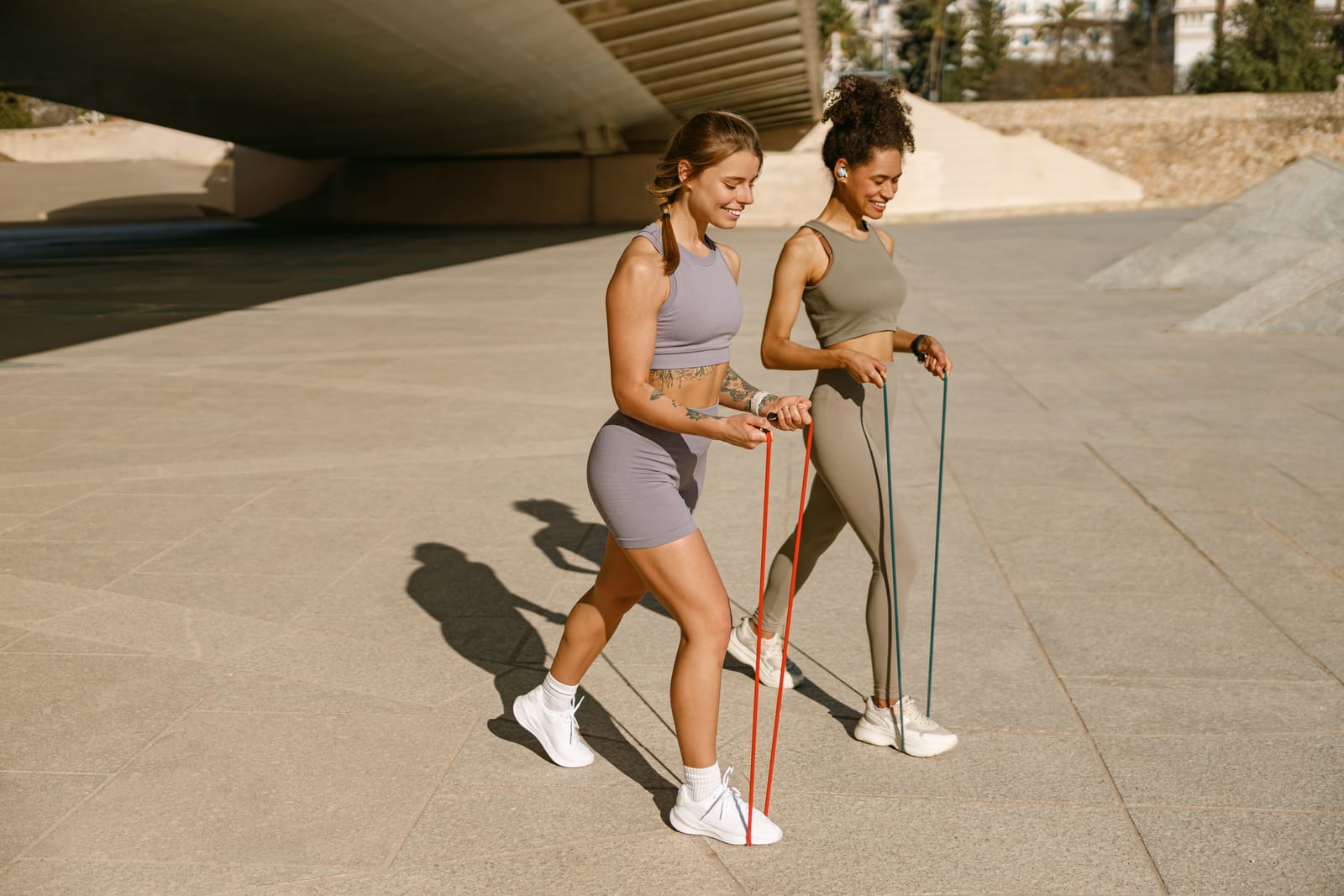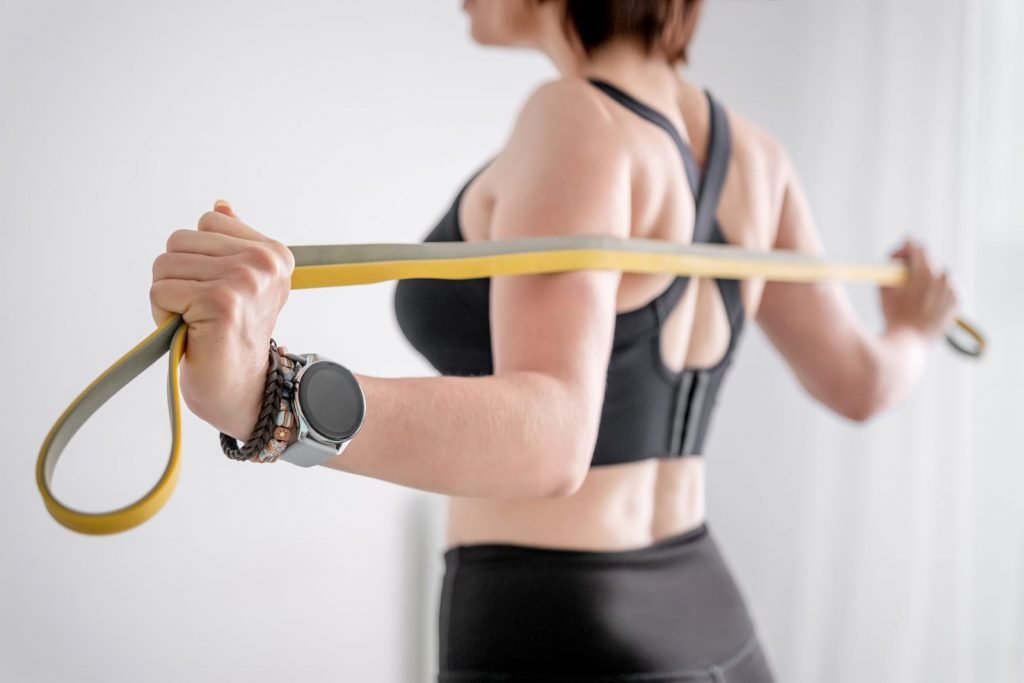
How to Use Resistance Bands for Strength Training – A Guide for Total Beginners
Resistance bands have surged in popularity as a strength training tool in recent years, appealing to both fitness enthusiasts and beginners alike. These lightweight and portable bands offer a unique way to build muscle, improve flexibility, and enhance overall fitness without the need for bulky equipment.
Key Benefits of Resistance Bands
- Portability: Unlike traditional weights or machines, resistance bands are lightweight and compact, making them easy to carry anywhere, even when traveling.
- Versatility: Resistance bands can be used for a wide range of exercises targeting different muscle groups. From full-body workouts to isolating specific muscles, they offer adaptability across routines.
- Affordability: Compared to weights or gym memberships, resistance bands are highly cost-effective, making strength training accessible to more people.
Types of Resistance Bands for Strength Training
Types of Resistance Bands: Resistance bands come in various forms, each designed to cater to different fitness levels and exercises:
- Loop Bands: Also known as mini bands, these circular bands are typically used for lower-body exercises like squats, lateral walks, and glute bridges. They are ideal for adding resistance to bodyweight exercises and enhancing muscle activation.
- Tube Bands: Featuring handles on each end, tube bands are perfect for upper-body exercises such as bicep curls, chest presses, and rows. They offer more control and a wider range of motion, making them suitable for more dynamic exercises.
- Power Bands: These are thick, flat bands often used for more intense strength training, including deadlifts and pull-ups. Power bands can provide heavy resistance and are also commonly used for barbell lifts and stability training.
How to Choose Resistance Bands That are Right for You
Selecting the appropriate resistance level is essential for optimizing your strength training routine. Beginners should start with lighter resistance to master form and technique. As you progress, you can gradually increase the resistance. Consider your fitness goals:
- For muscle building, opt for bands with higher tension;
- For toning and flexibility, medium or lower resistance is more suitable.
Many resistance bands come in color-coded sets, making it easier to identify the appropriate tension level.
How to Start Using Resistance Bands for Full-Body Workout

Resistance Band Exercises for Upper Body Strength
Chest Press and Flys for Building Chest Muscles
Resistance bands are highly effective for chest training, providing continuous tension that helps develop both the major and minor pectoral muscles.
For the chest press, anchor the band securely behind you—either around a sturdy object or with a door attachment—and hold the handles at chest level. As you press forward, the resistance increases, forcing your chest muscles to work harder.
- For a more targeted chest workout, try banded chest flys.
- Start with your arms extended at your sides.
- Pull the handles inward until your hands meet in the center
- Squeeze your chest at the top of the movement.
These exercises simulate the benefits of traditional weightlifting without the need for bulky equipment.
Overhead Shoulder Press and Lateral Raises for Shoulder Development
To build shoulder strength and stability, resistance bands offer various exercises that target all three deltoid heads. The overhead shoulder press involves:
- Standing on the band with both feet, and
- Holding the handles at shoulder height.
- Press the handles overhead until your arms are fully extended, then
- Lower back down with control.
Lateral raises involve stepping on the band and raising your arms outward to shoulder height. This exercise isolates the side delts, creating a broader shoulder appearance and enhancing upper body strength.
Rows and Bicep Curls to Target Back and Arm Muscles
Resistance bands are perfect for pulling exercises that engage your back and biceps. For rows, anchor the band at a low point and pull the handles toward you while keeping your elbows close to your sides.
This movement effectively targets the lats, rhomboids, and rear delts. Bicep curls are straightforward but highly effective with bands.
- Step on the band and hold the handles with palms facing up.
- Curl the handles towards your shoulders, keeping your elbows stationary.
- The band’s resistance increases as you curl, ensuring that both the concentric and eccentric phases of the exercise are challenging.
Resistance Band Training Plan for Lower Body Strength
Squats and Deadlifts
Resistance bands offer versatile options for lower body exercises like squats and deadlifts. For squats:
- Place the band under your feet
- Hold the handles at shoulder height
- Perform a standard squat
- Feel how the band’s resistance increases as you rise, providing added intensity at the top of the movement.
For deadlifts:
- Place the band under your feet
- Grab the handles with an overhand grip
- Hinge at the hips to lower your torso, then
- Engage your glutes and hamstrings to stand back up.
These exercises are excellent for building lower body strength, particularly when free weights aren’t available.
Glute Bridges and Kickbacks for Glutes and Hamstrings
Glute bridges and kickbacks are powerful resistance band exercises for sculpting your posterior chain. For glute bridges:
- Loop the band around your thighs just above the knees.
- Lift your hips towards the ceiling
- Press your knees outward against the band to increase tension, effectively targeting your glutes and hamstrings.
Kickbacks, a popular glute isolation exercise, involve looping the band around your ankles or using an ankle cuff. Stand on one leg and extend the other leg back while maintaining tension in the band. Both exercises are essential for developing stronger, more toned glutes.
Full-Body Resistance Band Workouts

Combining Movements for Circuit Training
Circuit training with resistance bands is an efficient way to engage multiple muscle groups and elevate your heart rate. A sample circuit might include:
- Alternating between upper and lower body exercises like squats
- Rows
- Overhead presses, and
- Glute bridges, each performed back-to-back with minimal rest.
This approach not only builds strength but also improves cardiovascular fitness, making it an ideal option for those short on time.
Using Resistance Bands with Barbells
Integrating resistance bands with barbells takes your strength training to another level. This method is often used in advanced lifting programs to increase resistance at the peak of a movement, such as the lockout during a squat or bench press. The bands add tension during both the concentric and eccentric phases, helping to build explosive strength and muscle stability. This technique is especially beneficial for athletes looking to break through plateaus and improve overall lifting performance.
Common Mistakes to Avoid with Resistance Bands
- Avoid Overstretching: Resistance bands are designed to stretch within a safe range, typically up to 2.5 times their original length. Overstretching them increases the risk of the band snapping, which can lead to injuries.
- Impact of Uneven Tension: Overstretching can also cause uneven tension which reduces workout efficiency and increases the likelihood of form breakdown.
- Secure Anchoring Points: Always ensure that your band is anchored to a stable object, like a door that is firmly closed or a heavy piece of equipment.
- Test Before Use: Before beginning your workout, test the setup with a gentle pull to ensure the band is securely in place.
- Avoid Unstable Surfaces: Never anchor bands to objects that can move or tip over. The more secure your anchor, the safer and more effective your workout will be.
Conclusion
Resistance bands are an excellent addition to any strength training routine, offering versatility, progressive resistance, and improved stability. They are perfect for targeting different muscle groups, from the upper body to the lower body, with minimal equipment.
For premium quality gym equipment, including exercise bands, gym gloves, punching bag, Pilates machine, power racks, and adjustable dumbbells, check out Dynamo Fitness Equipment. Whether you shop online or visit our showrooms in Melbourne, Sydney, Adelaide, Somerton, or Perth, we have everything you need to create your ideal fitness setup. Contact us today for more information.
